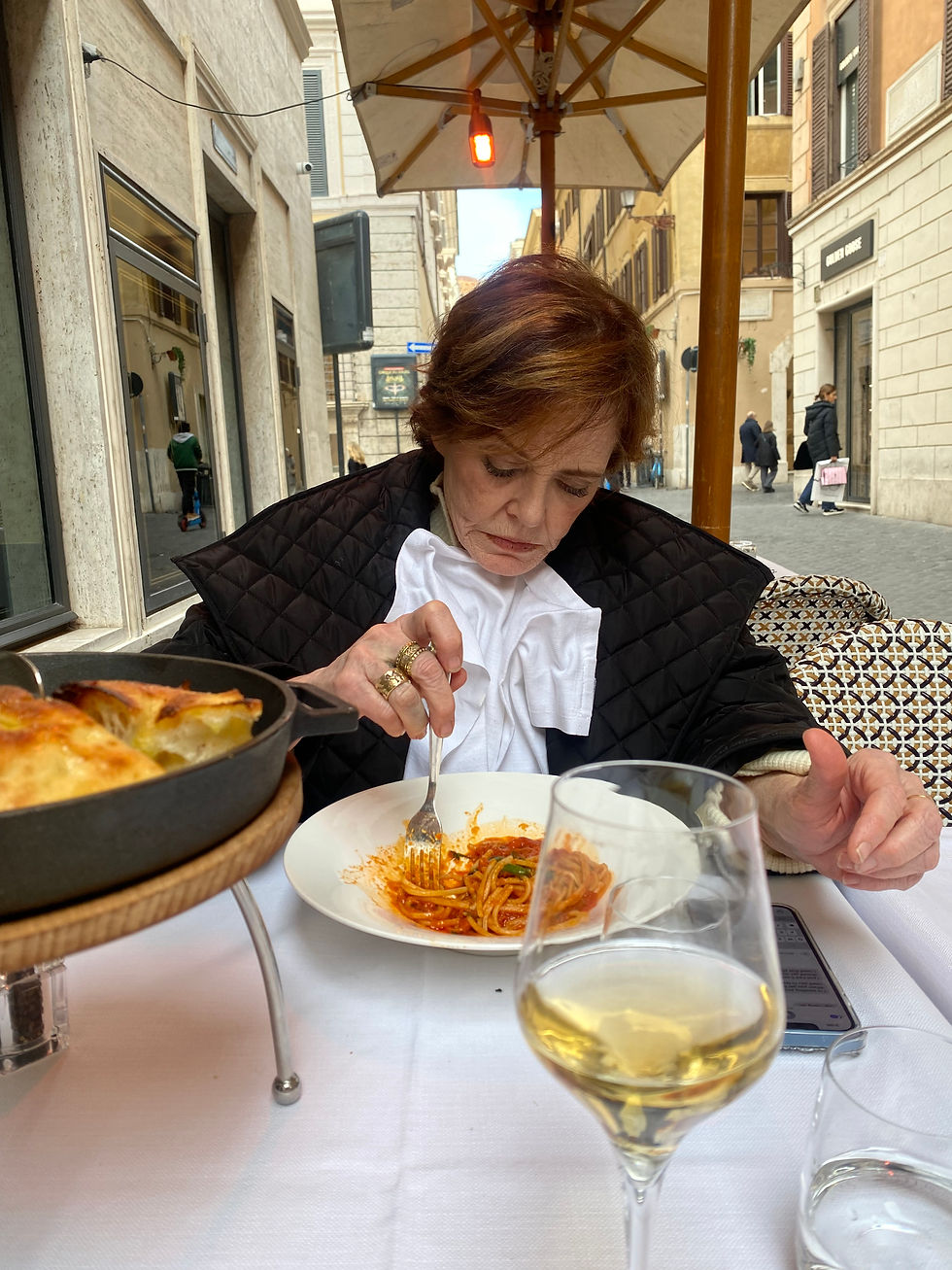22 Hours in Ravenna
- Kathryn Casey

- Mar 3, 2023
- 3 min read

From Pescara, Rosie and I dashed to the famous mosaic city of Ravenna in Emilia-Romagna, which I'd long wanted to visit. Ravenna once was the capital of the Western Roman Empire, so its history is pretty rich. Its towering and storied mosaics, which date to the 5th and 6th centuries, themselves tell a lot of stories, some of which are historical/political in that they incorporate the various rulers and regimes that governed the city. These are outside the scope of my post. However, many of the mosaics are visual narratives of biblical stories aimed at the largely illiterate faithful of the time. That's more familiar territory to me. I've plucked out just a few examples to give you an idea.



The mosaic artists were big fans of the hand of God coming down from the heavens, which I have to admit tickled me. In the Basilica di San Vitale, there's a depiction of Abel and the priest Melchizedek offering sacrifices that were pleasing to God. Note the hand coming down from above to accept the offerings.

This next vignette tells the story of God's trial of Abraham. In the closeup, you can see more clearly the hand of God coming down to stay Abraham's hand at the 11th hour. Note the remarkable calm of Isaac, who's all but giving an adolescent eye roll. (Ma, he's at it again with the altar and the sword.) Meanwhile, as her son faces execution at the hand of his father, Sarah looks like she's trying to remember her mother's recipe for hummus.

Here’s Moses getting the Commandments. Yup, here comes the hand again. The artist took some license here, opting for papyrus instead of tablets.

Below is the cupola of the Basilica di Sant’Apollinare Nuovo. Believe it or not, the dome artwork showing the Holy Spirit (represented by the dove) breaking through the heavens is a trompe l’oeil ! I for one did not believe it, and told our guide as much.
Some of the mosaics in this basilica were messed with over the years for political reasons -- faces and symbols erased and replaced, etc.
I particularly liked this depiction of the three wise men (aka kings) offering their gifts to the newborn Jesus, albeit a bit emphatically. I was relieved to see no sign of the Heavenly Father reaching down to grab the offerings before they could reach the Holy Family. (Not cool, Yahweh!)

This piece in the Mausoleum of Galla Placidia shows the martyr St. Lawrence willingly running toward the flames over which he’ll be grilled alive because he knows his reward in heaven will be great.

At the tomb's exit, visitors find Christ in heaven surrounded by His lambs. The scene was placed here as a reminder that earthly death is not the end and Jesus is the way to eternal life and light.
The beautiful “stone carpets” like the ones in the photos above and below were patterned on Persian rugs.

The crypt of the Basilica di San Francesco, the site of Dante’s funeral, has become a kind of ruin-cum-aquarium-cum-wishing well. Note the coins resting on, and goldfish swimming across, the original mosaic floor.

Below, Dante’s tomb. You might wonder why it’s not in Florence. He died here in 1321 while still in exile. Apparently, the city of Florence has requested Dante’s remains repeatedly, but Ravenna understandably has little interest in honoring the request.
Now, to more profane pursuits. As I noted in an earlier post, different cities in Italy have different types of signature breads. In Ravenna, it’s the piadina.

The mojito piccante at Bollicini, a popular watering hole, is very probably the best mojito on the planet. It was so spicy and tasty that Rosie switched from her beloved wine to suck one down.

We had dinner at Acqua e Sale, a family-friendly spot in the center with excellent food. Our tagliolini in clam sauce and tagliata in a sauce of zucchini and pistachio were rich and flavorful. A faceful of crunchy, salty, well-oiled rosemary piadina didn't come amiss.
It turned out the cook of this family-run spot learned his art from the former chef of the Four Seasons in Milan.
Doubly interesting was that he learned from this chef not in Milan but in New York, at a restaurant called Piccola Cucina in Soho, which he considers one of the truly authentic Italian restaurants in Manhattan. I’ve never been, but certainly will head down there soon.

No rave reviews for Ravenna accommodations.
We spent only one night in Ravenna, which was just as well. Many of the hotels in the center looked indifferent; the more inviting places were guest houses where somebody meets you and gives you keys and instructions about entering and exiting. Such was Le Case di San Vitale, where we stayed. The place was perfectly nice but not really my cup of tea. I prefer to have someone down at the desk should I encounter any problems.
Next post: The phenomenon known as “apericena”





































Comments